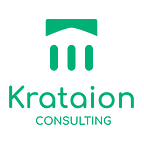Change: What is the timeline & how long will it take?
Spiros Milonas, Founder Krataion Consulting
Whether you are a consultant or a project leader this is a question you encounter often when working on a change initiative. At least we do. “How long will it take to actually land where we want?” The honest answer, as inconvenient as it may sound, is “we do not know”. We might have a clue or an estimation that can range from 2 to 6 months or 1 to 3 years but honestly….it depends.
First things first. There are types of change where the time frame can be determined more easily. Such examples can be changing the Marketing mix & packaging of a product, changing the UI/UX of our website to drive conversions or even a change in internal processes, roles and responsibilities. However when we deal with deeper changes that require changing the patterns, norms, behaviours, habits or mindsets based on which the organisation and its people have been operating with, things are a bit more complex and multidimensional.
In other words there are change initiatives where a linear cognitive approach with steps and milestones can be successful and there are deeper complex change initiatives where a more spatial and emerging approach will do the thing. Examples of such deeper changes are building an agile organisation, shifting the organizational culture, driving a digital transformation or building a customer centric organisation to name just a few. So if you are wondering how long you change initiative will take, here are a couple of things to keep in mind:
Have clarity on your objective
When you say you want your organization to become more agile or more customer centric, to have people with more ownership or even digitally transform what do you mean exactly? What specifically is the desired outcome? There are different shades on a colour pallet. Same with any complex change. Creating cross-functional teams while keeping a hierarchical structure may be a big enough step for you towards agility. But you can become even more agile by making your processes leaner or by implementing tools and ways that make the information flow faster and making it available to all. And you can even be more agile by introducing pilots, prototyping, user testing and so on. What’s important is to identify your end goal. Difficulty in determining the timeframe often relates to the fact that more clarity is needed on the exact desired objective and outcome.
Slowing down might get you there faster
When it comes to integrating complex change that involves a shift in the patterns, norms, behaviours, habits or mindsets, speed is not the best metric or objective. Actually it can be a real blocker as it puts an additional burden when you are already facing the discomfort that such a change initiative entails. When you are so focused on reaching a deadline, you are actually missing out on important data. When you stay with what “should have been” or what “needs to happen” you do not stay with “what is available in the here and now”. What is the resistance that the system shows? What is the support it needs to create movement? In other words what are the signs and the data that you need to mindfully observe and acknowledge -rather than reject or be upset with- so that the system and its people can move? Staying with what emerges and acting upon it requires slowing down, standing still and mindfully observing all that is happening around you rather than focusing on a timeline.
Trust the collective intelligence & consciousness of your system
Are you “doing” change to the people or with the people? Some things cannot be forced. Involving people in this process is such an important part of the change journey, yet it also means that you cannot predetermine what will surface from their processing, sharing and ideation. Trusting the collective intelligence of the system and letting it carry the project rather than you trying to force the outcome and the timeframe are two very different things. It is always more important to get where you want by standing firmly rather than getting there faster and for that to happen you need to make sure you own every step before moving on to the next one.
In order to make sustainable change you need to keep a balance between “disturbing” the system and forcing it to move and honouring the pace it can move with what is available in the here and now. Some things need time to be processed and absorbed and this depends on many parameters often outside of our control. And that is absolutely OK :-)
